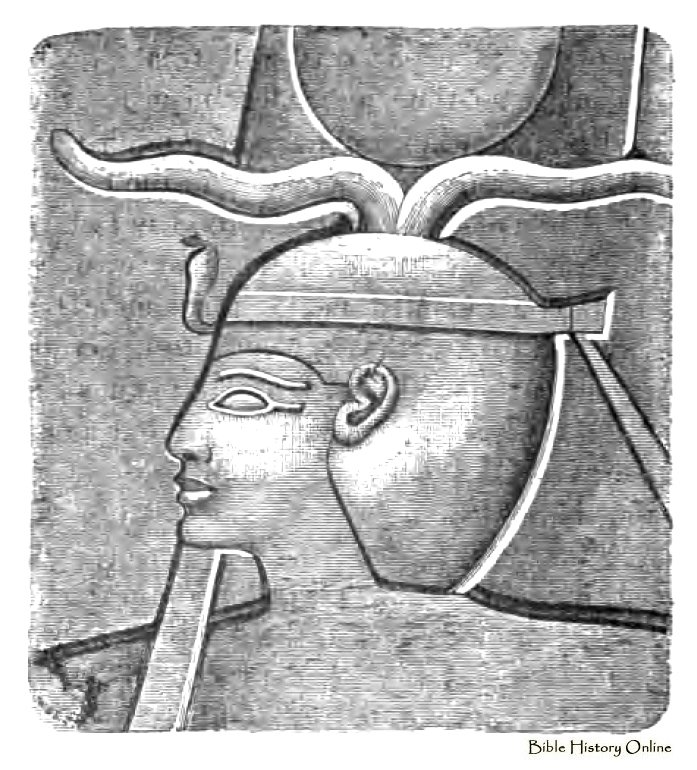Shishak (Sheshonq I): Egyptian King Who Invaded Judah And United Egypt
A. Sutherland - AncientPages.com - Shishak (Shishaq), later identified with the pharaoh Shoshenq I, was an Egyptian pharaoh who sacked Jerusalem in the 10th century BC, according to the Hebrew Bible.
Who Was Shishak – Sheshonq I?
Shishak (it was his Biblical name) was an official of a Semitic family and a Libyan chieftain. His family was long settled in Egypt, and had particular associations with the town of Bubastis, which became their residence. Shishak’s grandfather (he had the same name) obtained his higher position through the intermarriage leading directly to the royal house.
"His father Namrut, had held a high military office, being commander of the Libyan mercenaries, who at this timeformed the most important part of the standing army. Sheshonk himself, thus descended, was naturally in the front rank of Egyptian court-officials.
When we first hear of him he is called “ His Highness,” and given the title of “ Prince of the princes,” which is thought to imply that he enjoyed the first rank among all the chiefs of mercenaries, of whom there were many..." we read in George Rawlinson's book "Ancient Egypt".
During the rule of Shishak/Sheshonq I, Egypt was united and he understood that he must act effectively and quickly to become a legitimate pharaoh. Besides, he married an Egyptian princess, Maatkare, a daughter of Psusennes II, the last pharaoh in the 21st dynasty and thus, he forged another important marriage tie. It obviously helped his son to hold the title of high priest of Amun.
With a strong ruler, Shisak/Sheshonq I, began the sequence of Libyan chiefs who were to rule Egypt for the next two centuries. He brought the divided faction Tanis and Thebes together into a once again united Egypt.
He made also possible for his sons to get prominent high offices and thus, he stabilized Egypt’s political situation.
Shishak's Campaign Against Kingdom Of Judah And His Sack Of Jerusalem
According to the Hebrew Bible, Shishak had provided refuge to Jeroboam, the first king of the northern Kingdom of Israel who ruled c. 943–922 BC) during the later years of Solomon's reign.

The Bubastite Portal includes a large weathered relief in which the pharaoh lists more than 150 towns and peoples he conquered during his military campaign into Israel and Judah in c. 925 B.C.E. Photo: © Regents of the University of California/Courtesy the Digital Karnak Project. Image via Biblical Archaeology.org
Following the death of Solomon in 930 BC, the kingdoms of Judah and Israel under Rehoboam (Solomon's son) and Jeroboam I, respectively, were not able to offer much resistance to Shishak’s approaching army.
Shishak, king of Egypt, attacked the Kingdom of Judah with a huge and powerful army of 60,000 horsemen and 1,200 chariots, in support of his ally Jeroboam, the king of Israel. According to 2 Chronicles 12:3, he was supported by the Lubim (Libyans), the Kushites, and the Sukkiim, an ancient African nation.
These important events took place in the 5th year of the reign of Rehoboam, a son of and the successor to Solomon, and a grandson of David. Rehoboam managed to build fifteen fortified cities, which means that the attack of the Egyptian ruler was not totally unexpected.
Shishak's campaign against the Kingdom of Judah (which is documented with a stele discovered at Tel Megiddo) and his sack of Jerusalem is mentioned in the Hebrew Bible (2 Chronicles 12:1-12 and 1 Kings 14:25:
“In the fifth year of King Rehoboam, Shishak king of Egypt attacked Jerusalem. He carried off the treasures of the temple of the Lord and the treasures of the royal palace. He took everything, including all the gold shields Solomon had made…”
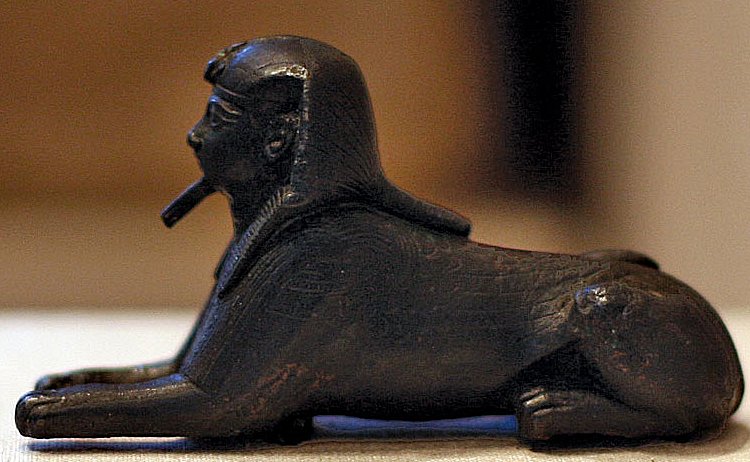
Sphinx of king Shoshenq I, Brooklyn Museum, New York City. Image credit: CC BY-SA 2.0
Rehoboam had to replace them with the brass ones.
According to "Antiquities of the Jews" written by Flavius Josephus (37 – c. 100), a first-century Romano-Jewish scholar, historian, and hagiographer, who was born in Jerusalem—then part of Roman Judea, the invading army met with no resistance throughout the campaign, taking Rehoboam's most fortified cities "without fighting."
Many believe that Shishak did not destroy Jerusalem but was bought off from entering it by being given all the treasures. Thus Jerusalem was spared destruction because Rehoboam paid tribute to Shishak.
2 Chronicles 12:8 confirm that the city does not appear to have been sacked: nor was there any destruction. Rehoboam was maintained in his kingdom, but he had to become pharaoh’s servant.
Except for biblical records, there is also a monument declaring Shishak’s victory and naming those 50 cities the Pharaoh captured. This monument can be found at the temple of Amun in Karnak. The exact number of cities captured by Shishak is still debated and so is the Bubastite Portal, a relief discovered at the temple of Amun in Karnak, in Upper Egypt.
It shows the cartouches of Shishak/Sheshonq I and his historical military campaign. In fact, the relief makes no mention of Jerusalem being sacked, nor of the king Rehoboam or Jeroboam.
He was succeeded by his son Osorkon I after a reign of 21 years. No trace has yet been found of his tomb. The sole funerary object related to Shoshenq I is a canopic chest of unknown provenance that was donated to the Egyptian Museum of Berlin by Julius Isaac in 1891.
Does it mean that his tomb was looted in antiquity? There are speculations regarding the tomb's location. Is he buried in Tanis or perhaps in Bubastis?
Written by – A. Sutherland - AncientPages.com Senior Staff Writer
Copyright © AncientPages.com All rights reserved. This material may not be published, broadcast, rewritten or redistributed in whole or part without the express written permission of AncientPages.com
Expand for referencesMore From Ancient Pages
-
 Fate Of The Woman Whose Mysterious Doppelgänger Ruined Her Life
Featured Stories | Mar 6, 2023
Fate Of The Woman Whose Mysterious Doppelgänger Ruined Her Life
Featured Stories | Mar 6, 2023 -
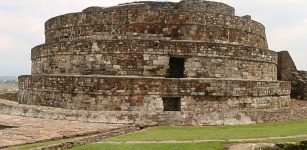 Ehecatl: The Snake-Bird Deity And God Of Wind Feared And Respected By The Aztecs
Aztec Mythology | Aug 26, 2016
Ehecatl: The Snake-Bird Deity And God Of Wind Feared And Respected By The Aztecs
Aztec Mythology | Aug 26, 2016 -
 Secrets Of Lake Huron – Mysterious Disappearance Of Long-Lost Steamship Solved
Archaeology | Nov 3, 2023
Secrets Of Lake Huron – Mysterious Disappearance Of Long-Lost Steamship Solved
Archaeology | Nov 3, 2023 -
 Extraordinary Discovery Of 2,000-Year-Old Bronze Statue Rewrites Etruscan-Roman History
Archaeology | Nov 8, 2022
Extraordinary Discovery Of 2,000-Year-Old Bronze Statue Rewrites Etruscan-Roman History
Archaeology | Nov 8, 2022 -
 Odin: Norse God Of War And Magic – Most Complex Figure Of The Norse Pantheon
Myths & Legends | Oct 27, 2016
Odin: Norse God Of War And Magic – Most Complex Figure Of The Norse Pantheon
Myths & Legends | Oct 27, 2016 -
 Algonquin People And The Myth Of The Medicine Woman In The Moon
Featured Stories | Feb 1, 2016
Algonquin People And The Myth Of The Medicine Woman In The Moon
Featured Stories | Feb 1, 2016 -
 Movie Stars’ Creepy Encounters With The Unexplained
Featured Stories | Oct 28, 2019
Movie Stars’ Creepy Encounters With The Unexplained
Featured Stories | Oct 28, 2019 -
 Tiger Cave: Rock-Cut Hindu Temple Complex Dated To East India’s Pallava Empire
Featured Stories | Jan 19, 2017
Tiger Cave: Rock-Cut Hindu Temple Complex Dated To East India’s Pallava Empire
Featured Stories | Jan 19, 2017 -
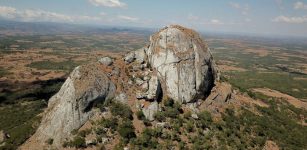 Ancient DNA Reveals Surprises About Life Of Early Africans
Archaeology | Feb 24, 2022
Ancient DNA Reveals Surprises About Life Of Early Africans
Archaeology | Feb 24, 2022 -
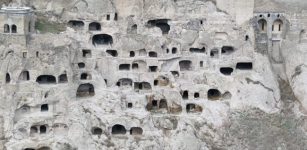 Spectacular Vardzia Cave Monastery – Huge Underground Complex Founded By The ‘Mountain Queen’ Tamar
Featured Stories | Dec 28, 2015
Spectacular Vardzia Cave Monastery – Huge Underground Complex Founded By The ‘Mountain Queen’ Tamar
Featured Stories | Dec 28, 2015 -
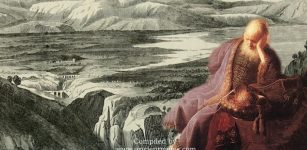 Tahpanhes – Biblical City Where Prophet Jeremiah And King Zedekiah’s Daughters Hid From The Babylonians
Biblical Mysteries | Jul 19, 2021
Tahpanhes – Biblical City Where Prophet Jeremiah And King Zedekiah’s Daughters Hid From The Babylonians
Biblical Mysteries | Jul 19, 2021 -
 Earliest Evidence For Domestic Yak – Revealed By Ancient DNA And Archaeology
Archaeology | Dec 15, 2023
Earliest Evidence For Domestic Yak – Revealed By Ancient DNA And Archaeology
Archaeology | Dec 15, 2023 -
 The Hitra Man Lived In A Turbulent Time – Was He A Stone Age Warrior?
Archaeology | May 10, 2024
The Hitra Man Lived In A Turbulent Time – Was He A Stone Age Warrior?
Archaeology | May 10, 2024 -
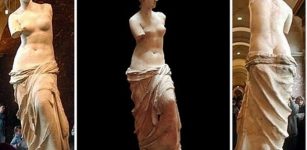 On This Day In History: Statue Of Venus de Milo Is Discovered On The Aegean Island Of Milos – On Apr 8, 1820
News | Apr 8, 2016
On This Day In History: Statue Of Venus de Milo Is Discovered On The Aegean Island Of Milos – On Apr 8, 1820
News | Apr 8, 2016 -
 Secrets Of The Jungle And Hidden Ancient Treasures Of The Serpent People
Ancient Mysteries | Feb 29, 2020
Secrets Of The Jungle And Hidden Ancient Treasures Of The Serpent People
Ancient Mysteries | Feb 29, 2020 -
 Genes For Learning And Memory Are 650 Million Years Old – Study Shows
Evolution | Jul 19, 2023
Genes For Learning And Memory Are 650 Million Years Old – Study Shows
Evolution | Jul 19, 2023 -
 Ancient Tomb Belonging To Princess Of Ancient Nomads Discovered In China
Archaeology | Dec 20, 2015
Ancient Tomb Belonging To Princess Of Ancient Nomads Discovered In China
Archaeology | Dec 20, 2015 -
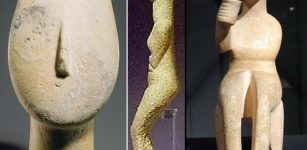 The Cyclades And Their Mysterious Society Lost In Time
Civilizations | Feb 4, 2016
The Cyclades And Their Mysterious Society Lost In Time
Civilizations | Feb 4, 2016 -
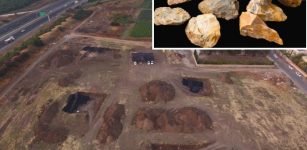 Incredible 500,000-Year-Old ‘Paradise’ With Thousands of Artifacts Discovered In Israel
Archaeology | Jan 24, 2018
Incredible 500,000-Year-Old ‘Paradise’ With Thousands of Artifacts Discovered In Israel
Archaeology | Jan 24, 2018 -
 Catherine De Medici – Queen Of France Supported Nostradamus, Was Suspected Of Poisoning And Blamed For Horrible Massacre
Featured Stories | Dec 17, 2018
Catherine De Medici – Queen Of France Supported Nostradamus, Was Suspected Of Poisoning And Blamed For Horrible Massacre
Featured Stories | Dec 17, 2018

